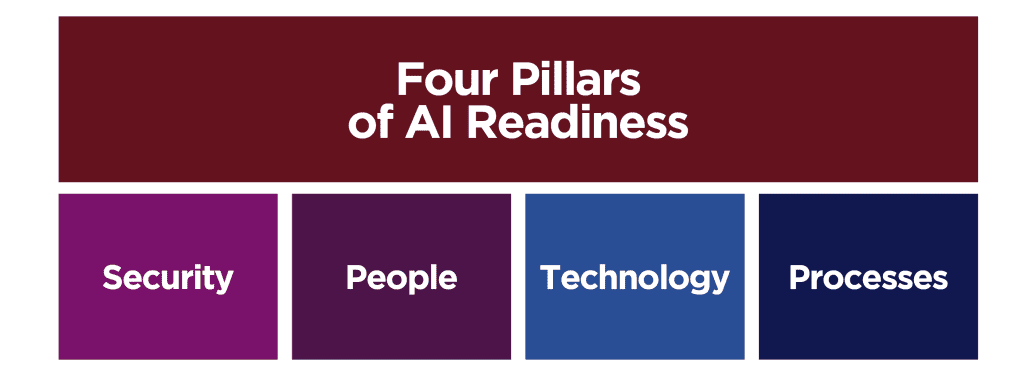Using generative AI to manage applications and hybrid cloud environments with greater efficiency
Lenovo’s Global Infrastructure and China Hybrid Cloud Services team developed the all-new xSpark solution to transform IT operations—boosting efficiency by 22% while reducing operations workload by more than 10%.
Challenge: Managing Complex Operations
Digital technology has become indispensable to organizations of all shapes and sizes—and for Lenovo, it’s part of our DNA. Our success depends on IT systems and services running reliably. Even a small disruption can have widespread and costly consequences.
But managing an IT landscape as vast and complex as Lenovo’s comes with unique challenges. On top of an extensive on-premises IT footprint, we’ve embraced a hybrid cloud strategy—and with it, there’s an ever-growing mix of private and public cloud resources to manage. Applications have also become more complex, evolving from traditional monolithic models to modular microservices architectures.
For years, Lenovo has made use of AI for IT operations (AIOps) to enhance IT service management. With the recent rise of generative AI (GenAI), we’re taking things a step further, combining large language models (LLMs) with our own cloud tech in xSpark: a pioneering solution for application and hybrid cloud management.
23 data centers on 4 continents
600,000+ IT tickets
1,700+ active applications
Hybrid Cloud Pressures Rising
Lenovo IT chose the Global Infrastructure and China Hybrid Cloud Services team as a proving ground for the xSpark concept. The team was experiencing a number of common IT operations challenges: an ever-rising workload, complicated maintenance and support scenarios, as well as strict audit, compliance, and security requirements.
As Lin Qiyu, Director, Lenovo IT Operations and Maintenance Management, notes: “Lenovo’s hybrid cloud landscape is only getting larger and more complex, which puts great pressure on our team. By using GenAI to rise to an even higher level of automation and intelligence in ITOps, we can keep up with growing complexity without an exponential increase in headcount.”
All this helps Lenovo to operate more cost-effectively, while improving the balance of work for our teams. With AI handling more repetitive tasks, people can work faster and focus on more valuable tasks.

Solution: Lenovo Powers Lenovo
The team conceptualized and co-created a series of LLM-powered solutions that form the core of xSpark. These models are designed to add a higher level of automation and intelligence to different ITOps processes.
One example is a GenAI-powered conversational assistant that leverages information from Lenovo’s internal knowledge base and technical documentation. Users can pose common troubleshooting questions to the model, which retrieves relevant information and summarizes it in response—saving valuable time and effort.
Additionally, xSpark assists with incident detection and resolution. By combining and analyzing data from multiple sources, it can quickly identify the root cause of what’s not working, locate the issue and suggest solutions for rapid remediation.
Yet another model supports job scheduling, while another generates new code from users’ natural-language prompts. GenAI can also automatically handle routine system checks and incident detection, presenting a summary of that work to engineers.


Four Pillars of AI Readiness
Pillar 1: Security
Prioritized the use of open-source LLMs that can be deployed on Lenovo’s private cloud.
Applied rigorous safeguards around model training and prompt engineering to minimize the potential for AI to produce incorrect information or highlight sensitive content.
Integrated specific models with Lenovo’s enterprise permission management system. This ensures that when a model triggers automation tasks, it does so securely and with proper authentication.
Pillar 2: People
For Lenovo, AI isn’t solely about creating algorithms—it’s also about ensuring people are empowered with the knowledge and skills needed to use these new tools effectively. According to Liu Tong, Manager, AI Insight at Lenovo: “We are positioning xSpark as a co-pilot for IT operations that is available to help people perform their work more efficiently and with better quality.”
To drive uptake, Lenovo formed dedicated teams help to promote AI within the company.
Pillar 3: Technology
Opted for a mix of open-source and commercial LLMs from different third-party providers. Model selection is based on multiple factors, including suitability for the underlying use case, security and compliance requirements, and computational resource consumption.
Pillar 4: Processes
Used internal knowledge and documentation to enhance AI-generated advisory features, allowing them to deliver more relevant, useful responses.
Followed a lifecycle management approach that spans from model design and development to testing, operation, and updates. This ensures stable output and continuous improvement of LLMs.
Building up GenAI Capabilities
The Global Infrastructure and China Hybrid Cloud Services team followed a rigorous approach, starting with identifying the most valuable opportunities for GenAI within ITOps. The next step was to select the optimal LLMs available on the market for each use case, performing testing and debugging before refining model prompts and parameters.
Through this process, the team established three core categories of LLM, which form the basis of the xSpark solution.
Lin Qiyu elaborates: “The simplest model type is called the ‘taker’, which can be used right out of the box. Next up, the ‘shaper’ model is refined with our own data and optimized for specific ITOps tasks. With final category of model, the “maker”, we build on top of an open-source LLM, adding significantly enhanced capabilities.”
Result: Double-Digit Efficiency Gains
Embracing GenAI to assist with and automate more parts of the ITOps workflow is saving valuable time and effort. In specific areas, like script generation, GenAI-assisted coding has lifted efficiency by 11%. More broadly, Lenovo IT estimates that it has seen efficiency improvements of around 22% across a range of tasks since introducing xSpark.
With GenAI shouldering a greater burden of lower-level, repetitive work, it also frees up human talent to focus on more complex and creative tasks.
Faster Incident Detection and Resolution
GenAI also empowers us to separate signal from noise when it comes to IT incidents. By harnessing LLMs to automatically sort through huge amounts of data, we can rapidly detect and isolate incidents that are causing problems.
“We’ve sped up root cause analysis by more than 18% on average,” confirms Lin Qiyu. “We’re now working to bring down our mean time to repair [MTTR] too. We believe this can be reduced by at least 5%.”
These improvements are helping Lenovo IT to maintain very high standards when it comes to incident management. With help from LLMs, the team will be able to use proactive monitoring to achieve 100% observability and act on potential problems before they have the chance to cause end-user impacts.
Smaller Operations Workloads, Stronger Fundamentals
To date, xSpark has helped reduce operations workloads by more than 10%. Looking ahead, we expect to see further improvements as xSpark becomes embedded across more of the company.
Beyond better controlling IT spend, we see xSpark as a powerful enabler of Lenovo’s continued success. Technology is our business—and the better our applications and systems perform, the better our results.
Lin Qiyu concludes: “We are always striving to deliver the best outcomes at the lowest cost—and it’s been incredible to see how xSpark has elevated that efficiency. I believe that GenAI is the most powerful tool we have for keeping IT and the business performing at their best.”
22% average efficiency gains in ITOps
18% faster root-cause analysis
>10% reduction in operations workload
>5% expected improvement in mean time to repair (MTTR)
To find out how you could benefit from Lenovo’s experience and AI-powered solutions to optimize IT operations, or speak to your Lenovo contact.

